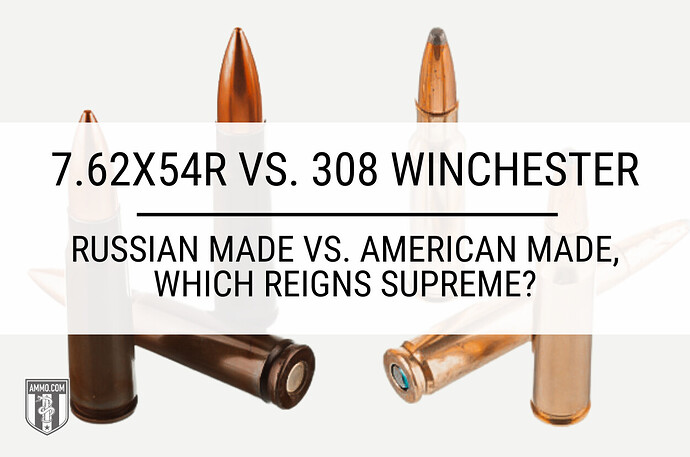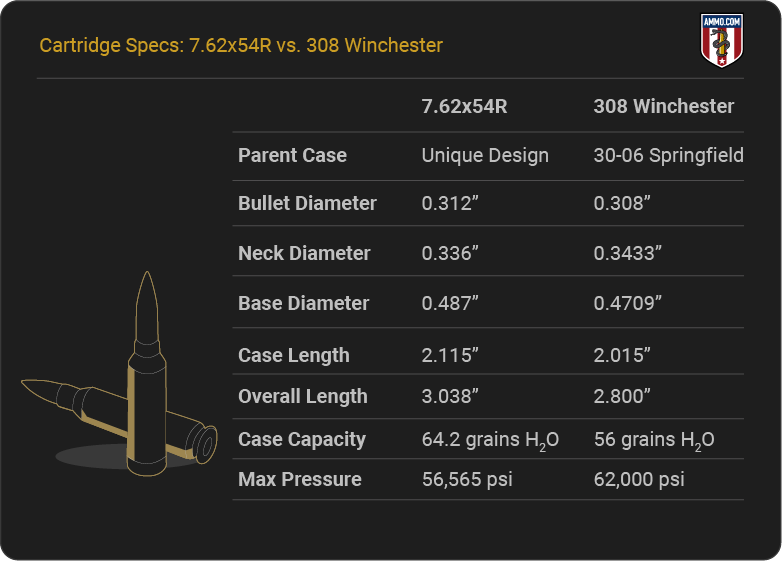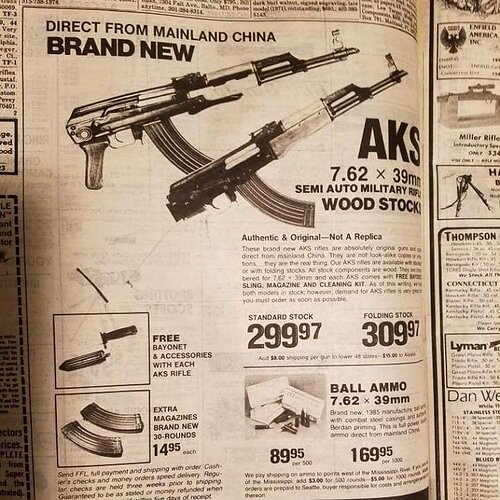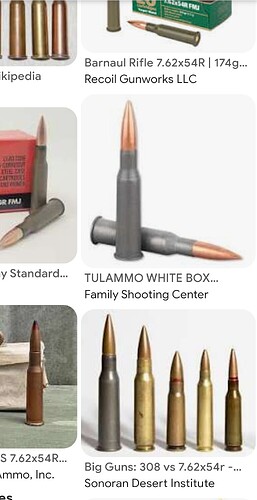The 7.62x54R (aka 7.62x54mmR) and .308 Winchester are two of the most iconic rifle cartridges. Comparing them is natural and well worth our time.
In this article we’ll pit these cartridges against each other and determine which performs better in situations that matter most to you.
What’s the Difference Between 7.62x54R vs. 308 Win
Although these cartridges were designed for similar reasons and have some similarities, differences in their specifications cause either to vary in recoil, trajectory, stopping power, hunting capabilities, and several other facets of performance.
Let’s begin by diving into the differences between the cartridges’ specifications.
Cartridge Specs
The Russian-made 7.62x54R is a unique design: not derived from another cartridge. It fires a bullet with a diameter of 0.312". The case has a neck diameter of 0.336”, base diameter of 0.487”, and 2.115” length. The round is 3.038” in overall length and has a case capacity of 64.2 grains H2O, with a maximum pressure of 56,565 psi.
The 308 Winchester is based on the 30-06 Springfield. It fires a 0.308” diameter bullet. Its case has a neck diameter of 0.3433”, which is close to that of the 7.62x54R. Its base diameter is slightly narrower at 0.4709”. It has a case length of 2.015” – just 0.1” shorter than the 7.62x54R. The overall length of the 308 Win cartridge is 0.238” shorter at 2.800”, with a case capacity of 56 grains H2O. Maximum pressure is 62,000 psi.
Let’s see how these design differences translate to real-world performance, starting with recoil.
Recoil: 7.62x54R vs. .308 Winchester
For most shooters, less recoil is better. The lower the recoil, the less shoulder discomfort. Lower recoil also produces less muzzle rise, which shortens the time the shooter has to spend returning their aim to the target. The shooter will also flinch less while firing, which promotes even better accuracy.
The recoil a shooter feels is subjective. Basing any comparison on felt recoil would therefore be pointless. On the other hand, free recoil energy is purely objective, as it is the product of four measurable variables: projectile weight, propellant weight, muzzle velocity, and firearm weight.
The 7.62x54R has recoil energy of 14.3 ft-lbs when firing a 151 grain bullet at 2,700 fps from an 8.8-pound rifle.
The recoil energy of the 308 Winchester is 17.5 ft-lbs when firing a 180 grain bullet at 2,610 fps from an 8-pound rifle.
The 7.62x54R wins this section because it has less recoil than the 308 Win.
Trajectory
“Trajectory” is the bullet’s flight path downrange. It is measured in inches of bullet drop, or minutes of angle (MOA).
When its target is nearby, a bullet’s trajectory appears as a flat line – the result of gravity having relatively little time to affect the bullet. But when a bullet travels a long distance, its trajectory resembles an arch: rising and then falling, like a baseball thrown from the outfield. A flatter trajectory is preferable for covering long distances, as it requires the shooter to make fewer adjustments to remain accurate.
Both of these cartridges have been used as sniper rounds in past conflicts and wars, so we should expect a reasonably flat trajectory from each. The following scenarios are generalizations. A cartridge’s trajectory varies from load to load, so you might have a different experience when you fire these rounds at the range.
When zeroed at 100 yards, a 7.62x54R 180 grain SP bullet will drop -5.4” at 200 yards, -19.8” at 300 yards, and -89.6” at 500 yards.
When sighted in at 100 yards, a 308 Win 180 grain SP bullet will drop -4.2” at 200 yards, -15.1” at 300 yards, and -62.8” at 500 yards.
When firing a projectile of the same weight, the 308 Win has a flatter trajectory than the 7.62x54R.
Continue reading 7.62x54r vs. 308 Winchester: Soviet Made vs. American Made, Which Reigns Supreme? on Ammo.com





